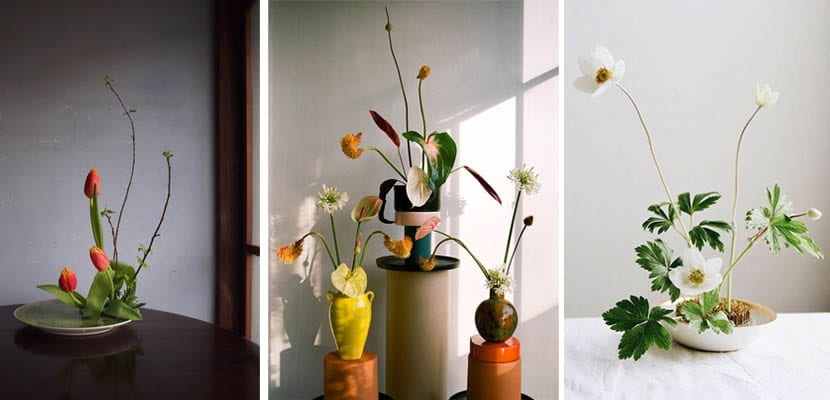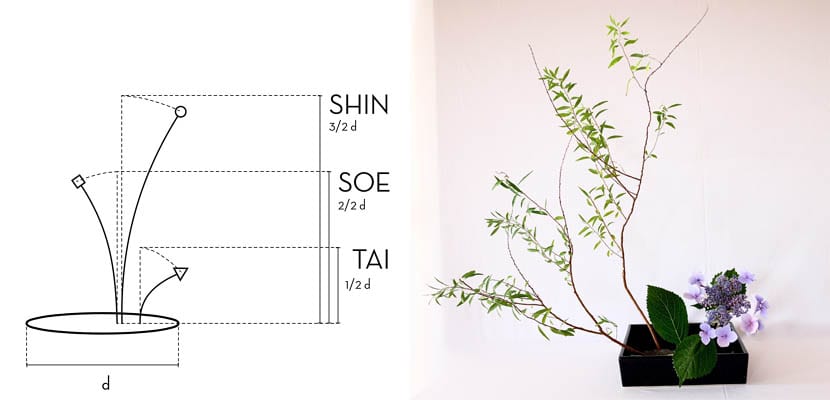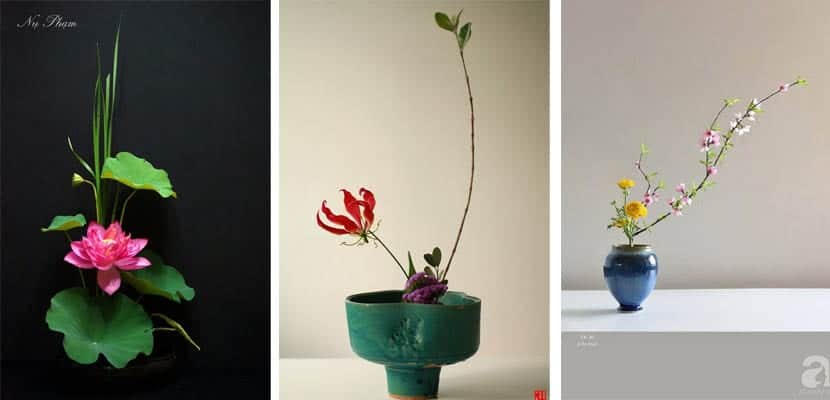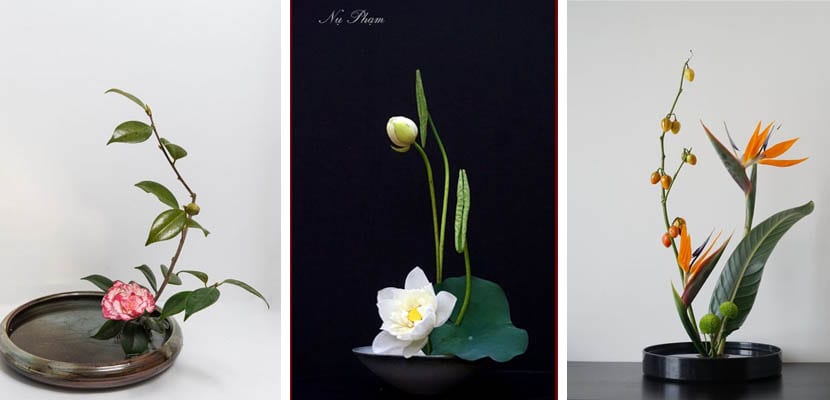
If you are looking for new ideas to incorporate a natural element into your home, the ikebana flower art can provide you simple, elegant and minimal ideas to do it. This ephemeral art for which cut flowers, branches and leaves are used seeks to create harmonious combinations with the sole purpose of contemplating them.
What is the Ikebana?
Ikebana is a concept referred to a floral art closely related to the Japanese culture. The term comes from Ikeru (to make live, reach the essence of something) and Hana, flower (pronounced like bana). Ikebana therefore means "to give life to the flower", "to vivify the flowers." And like everything that has to do with this culture, its objective is not merely decorative but an exercise in reflection and contemplation.
Concentration It is an indispensable condition for arranging the flowers with inner calm. In addition, in the space where this art is carried out, a rigorous vigilance of order, cleanliness, silence and stillness must be maintained, since in its origin, the place where the flower arrangements were made was sacred, a concept that remains until today .

In ikebana they are used cut flowers, branches, leaves, seeds and fruits. In the eastern context, the word flower (Hana) includes all species of plants: branches, leaves, grasses, roots, moss, etc. Due to the elements used, this art is ephemeral, being limited by the time it takes for the flowers to wither. This expiration date makes each composition serve as an exercise in reflection on the beauty of forms and the passage of time.
How to make an ikebana?
To make an ikebana you need cut flowers, branches, leaves, seeds or fruits. It is not necessary to use each of them, but if we combine those elements that we choose harmoniously, always preserving asymmetry and respecting the symbols of each element.
Triangular model
In general, every Japanese Ikebana flower arrangement is composed of three groups of flowers in order to represent the Tai-Yo-Fuku triangle (sky-earth-man, respectively). The most important line is the stem that represents Heaven, and which is often called the primary or "Shin." This constitutes the center line of the entire arrangement and consequently, the strongest and tallest stem should be chosen to represent it.

It is followed in importance by the secondary stem or "Soe," which symbolizes Man. It is positioned so as to provide the effect of a oblique development projected in front of the center line. It should be about two-thirds the height of the primary stem and be inclined towards the latter.
The tertiary stem or "Hikae," which represents the Earth, is the shortest and is arranged towards the front or slightly to the opposite side of the base of the first two. Once the three main stems are correctly positioned, you can also add additional flowers to complete each arrangement.
Flowers and symbols
The blossoming branches of the cherry, plum or peach tree are commonly used in Ikebana to create height and movement. Among the flowers, chrysanthemums, peonies and lotus flowers they are used to represent aspects such as longevity, wealth or purity respectively. Orchids, wisteria, camellias, jasmine, daffodils, roses, azaleas and magnolias are also frequent.

The symbolism of the passage of time is of great importance to the Japanese Ikebana flower arrangement. Just as it is important to represent characteristics of the season of the year, it is also essential to pay attention to the symbols related to the element development vegetables used in order to represent:
- Last: open buds, vegetable pods and dry leaves.
- The present: semi-open buds or lush leaves.
- The future: buds, as a suggestion of future development.
Once the material has been chosen, the next step is to pruning. Most of the flowers or branches, regardless of the form or order in which they have developed, have some superfluous elements, especially when they are used for ornamental purposes.
The recipient
In the basic triangular model and depending on how the container is used as the base of the arrangement, we have the following variations:
- Moribana. This form of arrangement uses low and wide containers. The chosen elements are nailed in a 'kenzan' to reproduce landscapes. These, in turn, rest on the container known as 'kaki', filled with water to extend the life of each arrangement.

- Nageire. It is the form of arrangement that uses tall, cylindrical vases.

The creation process
The creation process will take place in silence, since it is a meditation exercise in which nature takes shape in front of the author. In addition, in the environment where the art of flowers is carried out, a rigorous vigilance of order, cleanliness, silence and stillness must be maintained, because in its origin, the place where the flower arrangements were made was sacred, a concept that is keeps until today
Contemplation It is the last step in the process of this floral art. As soon as creation is complete, take time to contemplate what has been done and reflect on the process of creation. Since as we have advanced, the important thing is not the final action but the path that has led you to that action.
Before making the arrangement, remember to consider where we are going to place it, looking at the furniture, the color of the walls and the elements that surround it. The flower, the vase and the environment must be in harmony with these, in order to enhance the artistic value of ikebana.